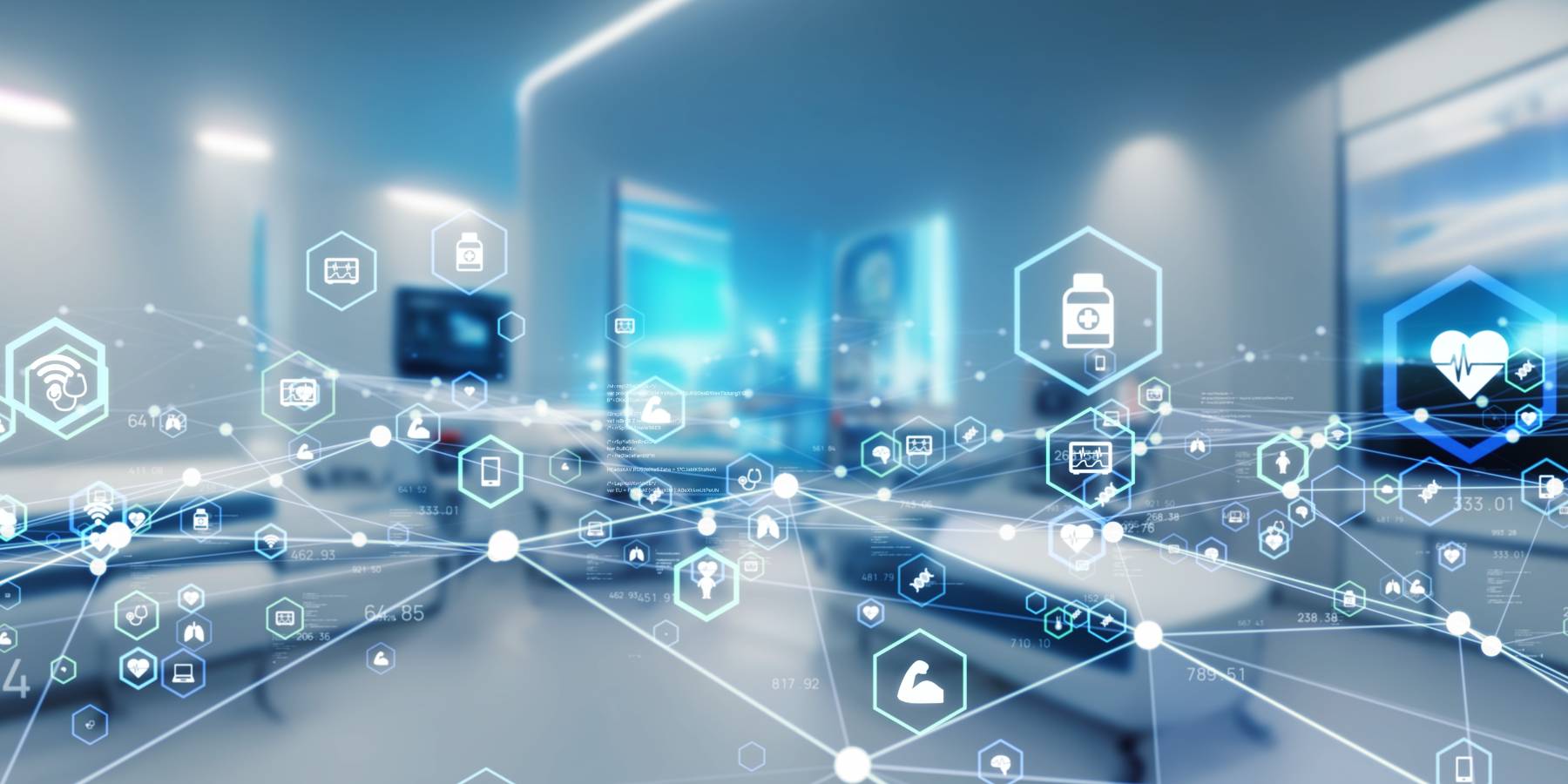The connected smart devices that form the internet of things (IoT) are at the forefront of this technological revolution. More and more medical tools are sharing information across the same network (such as vital signs, temperature, etc.), and, along with wearables that can be used at home, patient care is becoming more precise.
How is IoT technology being applied in healthcare?
From smartwatches managing our wellbeing, to innovations in cancer care, the possibilities for applying IoT technology to healthcare are endless. Not only can it create efficiencies from automation and cost reduction, but it also has the potential to deliver higher quality healthcare. How can this impact on waiting times? Through quicker, more accurate diagnoses, reduced hospital admissions and smarter use of resources.
New AI and IoT technology can also make information much more accessible to healthcare professionals. Hospitals produce vast amounts of data which can be challenging to access, analyse and share. IoT can process this with ease, revealing patterns and insights and improving communication between professionals, leading to better outcomes for staff, patients and the sector as a whole.
■ How is IoT technology currently being applied in hospitals?
In order to understand the impact that IoT can have on waiting times, it is important to look at how the individual ways that it is having a positive impact across healthcare.
■ Better and faster diagnoses
AI has the ability to improve diagnostic performance and optimise patient care. For example, AI can far exceed the limitations of human sight by using precision image processing and recognition capabilities. This means greater accuracy and faster diagnoses in areas such as Radiology, CT scans and X-Rays, thus speeding up how quickly patients are examined and diagnosed.
■ Freeing up beds
A hospital stay can be lengthened when healthcare professionals do not feel confident that the patient is well enough to be discharged. However, the longer a patient stays in hospital, the more vulnerable they are to hospital-acquired infections and other complications. This is particularly risky for the elderly.
Technology that analyses vital signs can give healthcare professionals insights which help them deliver better care for patients. It can also make diagnostic decisions. Studies have shown that AI technology can learn from monitoring and comparing the vital signs of patients, reliably identifying who has become well enough to be discharged, thereby freeing up beds.
■ Remote Monitoring
Remote patient monitoring systems use IoT sensors to provide healthcare professionals with updates on patients’ vital signs. So, it becomes possible to track a patient’s health from anywhere in the hospital and alert staff to significant health events.
These IoT healthcare systems reduce the labour needed to keep track of a patient’s health while in the hospital. Typically, nurses manually record and log patient vitals every few hours. With smart monitoring systems, these vitals are automatically logged, freeing up staff for other work.
This technology can be transformative when emergency departments are under stress and nearing capacity. AI-powered virtual assistants can monitor the sickest patients, alerting healthcare professionals if their condition deteriorates. This frees up staff to triage and treat other patients, again reducing waiting times.
■ Remote After-Care
Remote IoT technology can be applied in tracking the health of patients once they have been discharged. This has the potential to reduce the need for follow-up visits, freeing up significant amounts of time.
The University of Pittsburgh Medical Center Magee-Women’s Hospital, trialled IoT devices to track the blood pressure of women with pregnancy-related hypertension. This condition requires post-natal monitoring, even though it often resolves after birth. With remote monitoring in place, an incredible 57% of patients were actually able to avoid attending the hospital for their first checkup.
■ Asset monitoring
Efficiencies such as IoT asset monitoring may seem to be unconnected to waiting times, however it will bring multiple benefits. For example, hospital staff often need to know the exact location of wheelchairs. When hospital-owned wheelchairs are equipped with IoT sensors, they will be easily tracked from the IoT asset monitoring application, so time will not wasted by staff hunting them down.
■ Research
By tracking and monitoring patient health, IoT technology could potentially compile a massive amount of data on specific diseases that would otherwise take many years to collect. It’s therefore ideally suited to medical research. Patients of the future could see rapid leaps forward in diagnoses and treatments, rather than having to wait and hope indefinitely.
■ Preventative care
Universal access to patient health and wellbeing data could exponentially reduce illness, by helping people live healthier lives – intervening sooner, flagging up high risk patients and preventing disease. The knock-on benefit being that fewer people would need to access the health system so frequently.
As scientific research strides forward, healthcare systems need to be equipped to handle an ever-evolving scope of medical diagnoses and treatments. And, as populations also grow, the costs of healthcare provision will inevitably continue to rise.
Long patient waiting times are just one symptom of a healthcare system struggling to cope. And, in this light, the ability of IoT to mitigate costs and bring efficiencies seems no longer just a possibility, but a necessity.
